The Cuvier’s beaked whale holds the record for the deepest and longest dive for any mammal, being able to stay underwater for three hours and 42 minutes at depths that can reach nearly 3,000 meters. It is one of the larger members of the baked whales in the Ziphiidae family. The Latin name, Ziphius cavirostris, refers to the sharply pointed rostrum xiphias, and to a deep hollow cavum found at the base of it in adult males.
The body is large, robust and cigar-shaped, with a triangular falcate dorsal fin located far down the animal’s back. There isn’t difference in length between sexes, with an average adult size of 6 m. They can weight up to 3 t. The body of adult males is generally dark gray with the head being significantly paler or even white. Females vary in color from dark grey to reddish brown. There are two teeth, in males only, located at tip of lower jaw.
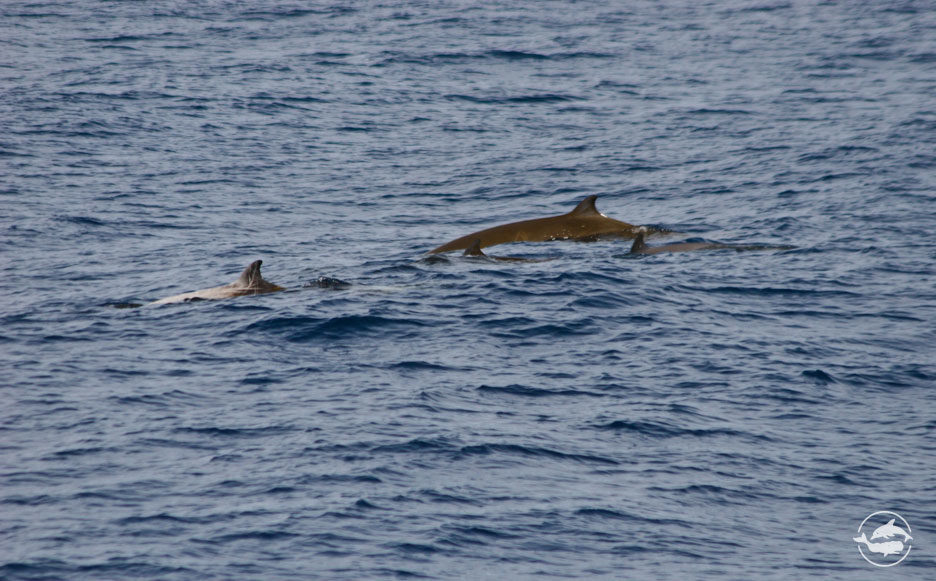
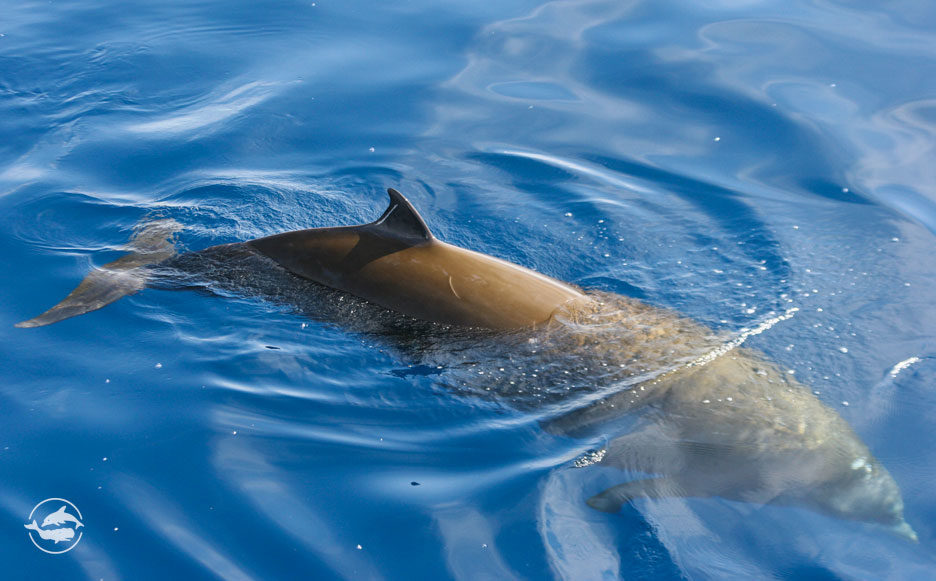
Cuvier’s beaked whales feed at incredible depths, up to 3,000 meters, and most feeding occurs near the seabed. They use suction feeding to capture prey, that include a wide variety of squid (at least 47 different species!) and sometimes deep-sea fish and crustaceans. Studies show that they use echolocation for foraging mostly below 500 m.
Since they live in deep waters, spending a lot of time underwater for feeding, Cuvier’s beaked whales are hard to find because they spend only short periods at the surface to breathe. They are typically found individually or in small groups (2-7 whales). Males are the most likely solitary animals. They are very sensitive to anthropogenic noise and tend to avoid vessels, but they can be quite inquisitive in some areas, including the Mediterranean Sea.
Cuvier’s beaked whales reach sexual maturity usually between seven to eleven years of age for both sexes. Breeding and calving can occur year-round, peaking in the spring. After a year of gestation, females give birth to a single calf every two to three years. Newborn are bluish-grey or brownish on the upper side. They are about 2,7 m long and weight 300 kg. They have an estimated lifespan of up to 60 years.

The common bottlenose dolphin is most likely the best known of all cetaceans, figured in legends and being known since the ancient Greeks ...
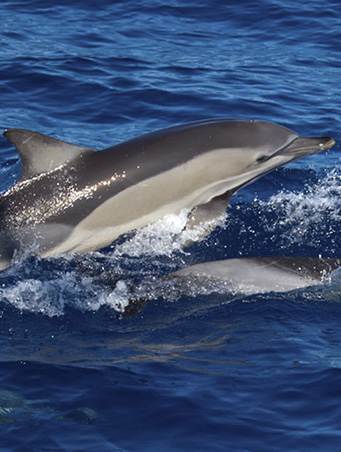
The short-beaked common dolphin is a medium-sized dolphin, easily distinguishable by a very unique hourglass-like pattern on the side of ...
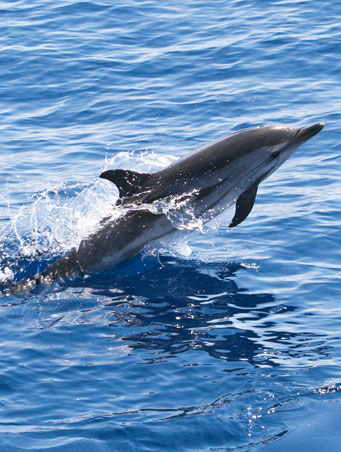
The striped dolphin is the most abundant dolphin species in the Mediterranean Sea. It is a small, active and energetic dolphin, usually s ...
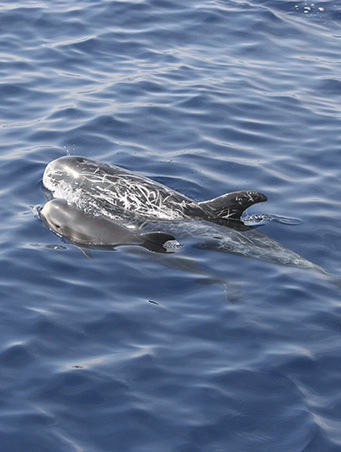
Risso’s dolphins are large members of the Delphinidae family, presenting a distinctive coloration that can vary throughout their ...
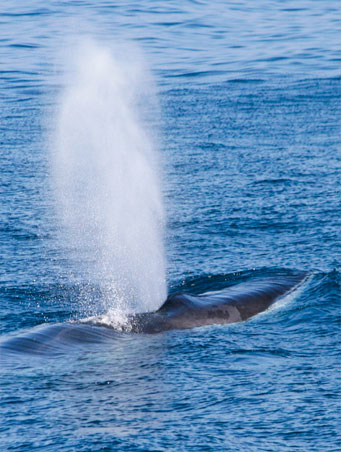
The fin whale is the second longest animal in the world, after the blue whale, reaching a length of 23 m and weighting up to 50 tons. The ...
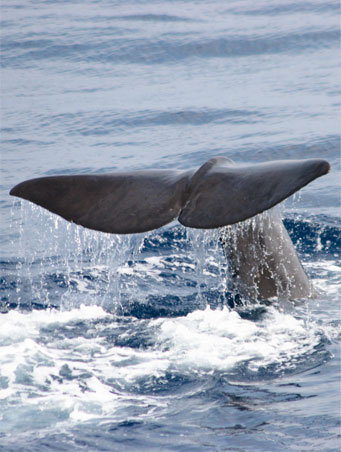
The sperm whale is easily recognisable by its massive heads which contains the spermaceti: the world’s most powerful natural sonar or ech ...